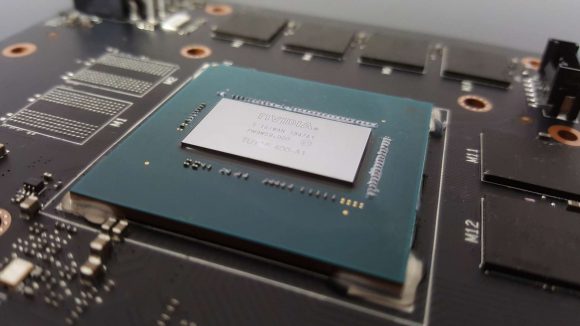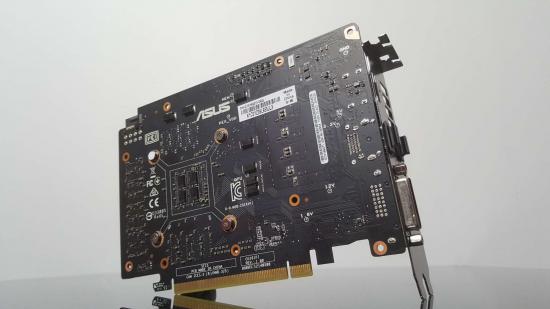It’s rumoured that Nvidia’s next GeForce graphics card isn’t going to be a super high-end RTX 2080 Ti Super, it is in fact going to be a GTX 1650 Ti. That’s still going to be a Turing-based GPU, but of a pretty low-end sort that you’re not going to want to try throwing something like Control’s beautiful ray traced game world at.
The rumours are that the GTX 1650 Ti will appear in October this year, offering gaming performance somewhere between the current GTX 1650 and the GTX 1660. There’s a $70 difference between those two current mainstream GeForce GPUs, which doesn’t leave a lot of wiggle room in terms of pricing for a GTX 1650 Ti variant to drop into. It’s also a little strange that the timing is so far behind the other three 16-series GTX GPUs.
So why is Nvidia looking like it’s going to launch this Ti some six months after the standard GTX 1650? There’s only one reason I can think of, and that’s some red team competition. With all the subtle Navi 14 appearances that have been made over the last month or so it’s surely not long until AMD launches its own new mainstream GPUs. And Nvidia does like a spoiler launch…
To me this feels like Nvidia is once more set to preempt a Radeon launch with its own new card, which might give us a bit of an indication when AMD might release its Navi-based RX 5600 and RX 5500 graphics cards, and also their potential performance range too. At the moment we still don’t know a huge amount about the specs of the Navi 14 GPUs AMD is going to release into the wild. We’ve seen benchmark appearances of at least three different SKUs – using 3GB, 4GB, and 8GB of VRAM – all using the same AMD graphics silicon.
What the CompuBench info doesn’t tell us is the actual makeup of the chips themselves. They report a maximum of 24 compute units, and therefore a potential for the RX 5600 XT to arrive rocking 1,536 RDNA cores, with a maximum clock speed of 1,900MH. But there could well be cut-down versions of the same GPUs using the different amounts of video memory that have been mentioned before.
But with Nvidia potentially releasing a GTX 1650 Ti for less than $200 in October that might indicate some GeForce concern about the expected performance of at least one of the Navi 14 graphics cards rocking up around the same price and maybe giving its current mainstream lineup a bit of a shoeing. That could give us an RX 5500 for under $200 but with performance well above the current GTX 1650, and an RX 5600 rivals the top 16-series cards.

There are a couple of options for Nvidia to kit out the GTX 1650 Ti – either it uses the full version of the TU117 GPU running the straight GTX 1650, or a cut-down iteration of the TU116 GPU used in the GTX 1660 and 1660 Ti cards.
That would give it 1,024 CUDA cores with a TU117 chip, or if Nvidia needs to squeeze a bit more performance out of this new card the TU116 GPU could deliver 1,280 or 1,152 CUDA cores. Which Turing chip it ends up kitting the GTX 1650 Ti out with will indicate where it thinks the competition is going to be.
These rumours then suggest to me the two graphics card heavyweights are lining up to trade blows at the mainstream level around October and November this year. Just in time for Christmas and the blackest of all Fridays.
Which would be great news for all us PC gamers. For too long we’ve had to make do with super high-end graphics card releases – I love a shiny enthusiast card as much as the next nerd, but they’re way beyond the stretched wallets of most of us. What’s coming later on this year should see affordable GPUs hitting the shelves offering higher gaming performance than we’ve ever seen at these mainstream pricepoints.
Pumped for some new mainstream GPUs? Join the conversation via this article’s Facebook and Twitter threads.
